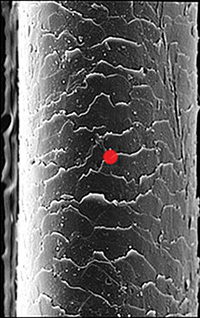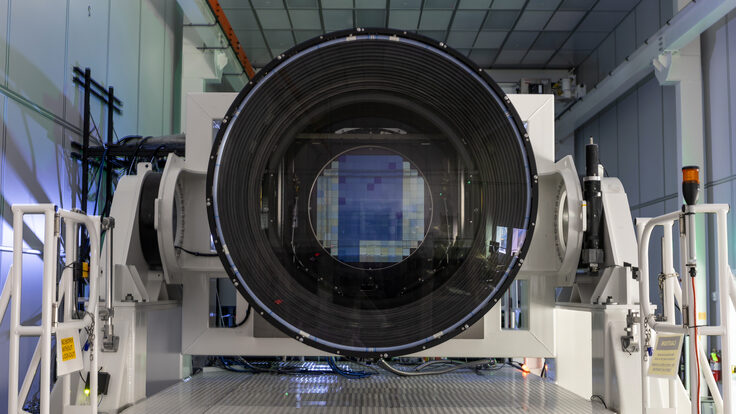X-rays reveal poison in Mona Lisa model
 |
|
| Scientists at Brookhaven's National Synchrotron Light Source used a beam of X-rays just five microns in diameter—the size of the red dot— to analyze sections of hair representing just 15 minutes of growth. Image: Brookhaven National Laboratory |
|
Scientists had already deconstructed Mona Lisa's smile. Now, with intense beams of X-rays, they have analyzed her hair.
Isabella (14701524) of Aragon, princess of Naples and duchess of Milan, is thought by some to be the woman in the famous portrait by Leonardo da Vinci. Behind the closed lips of that enigmatic smile she had blackened teeth, indicating mercury exposure. Did the toxic element do her in?
At Brookhaven National Laboratory's National Synchrotron Light Source, scientists aimed narrow beams of X-rays at strands of Isabella's hair. Hair grows about 16 centimeters per year; they were able to zoom in on sections representing just 15 minutes of growth.
Their studies revealed that within 20 days of her death, Isabella's hair contained elevated levels of mercury ranging from 10 to 50 parts per million. The World Health Organization deems 50 ppm of mercury in hair toxic, and recommends a limit of 5 ppm for the general public.
Researchers also tested Isabella's bone for common diseases of the time. Her bone tested positive for visceral leishmaniasis, the most severe form of a parasitic disease that can cause skin ulcers in immune-suppressed patients and fatal damage to vital organs.
Mercury was considered a cure-all for skin diseases in medieval times, and doctors likely used it to treat Isabella's leishmaniasis-related skin lesions. Because mercury poisoning can suppress the immune system, the tale of Isabella's demise could very well be this: mercury intoxication, leading to a weakened immune system, clearing the way for a deadly infection.
The study was done by scientists from the University of Chicago, University of Turin, University of Pisa, University of New Mexico, Academic Teaching Hospital München- Bogenhausen, and the New Mexico Health Enhancement and Marathon Clinics Research Foundation.
Kendra Snyder
Click here to download the pdf version of this article.






